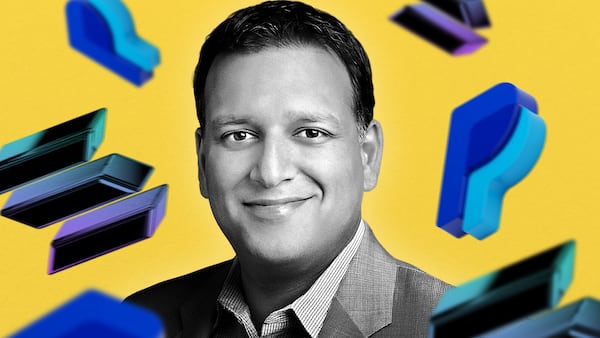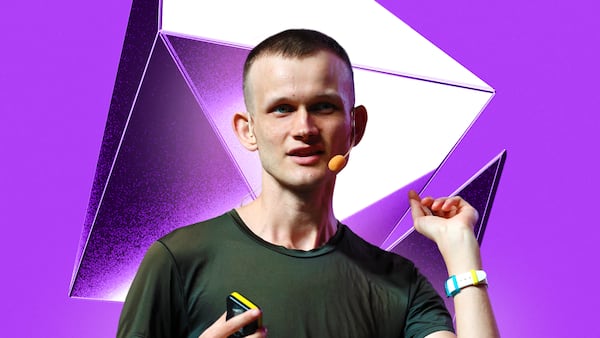- Ethereum's architect shares thoughts on smart contracts, EVM, and other features.
- Buterin says Ethereum developers should have shipped Proof of Stake sooner.
- Ethereum is going mainstream with advent of ETFs.
When 620 weary developers emerged after three days of nonstop coding at this year’s ETHBerlin event last week, few expected Vitalik Buterin to be speaking on stage.
The co-founder and prime architect of Ethereum was a surprise guest.
What was even more surprising were some of his reflections on building the industry’s second-largest blockchain. Buterin described some of the regrets he had about the initial design of Ethereum in detail.
For many in the audience, his discourse not only evoked the halcyon days of the network’s birth in 2014, but it also helped fill in the road map for what comes next for a cryptocurrency now worth $448 billion.
The US has just approved a spot Ethereum exchange-traded fund, and BlackRock, the world’s largest asset manager, has launched its own tokenised fund on the blockchain.
The Ethereum network has spawned a sprawling ecosystem of developers and financial applications worth more than $63 billion, and it has become a byword for decentralised finance.
List of things
Still, Buterin, a 30-year-old Canadian-Russian programmer, said he has a list of things he would have done differently. They range from the development of Ethereum’s Virtual Machine to smart contracts to the Proof of Stake consensus mechanism.
And he remarked that even as Ethereum goes more mainstream, it’s still misunderstood.
“Bitcoin has a simple narrative which is digital gold,” Buterin said. “But like with Ethereum, it’s like ‘Whoa, what the heck is Ethereum?’”
ETHBerlin04 in numbers 🧮
— ETHBerlin04 (@ETHBerlin) May 26, 2024
- 802 super humans in total
- 627 hackers
- 83 project submissions
- 56 volunteers
- 40 experience hosts
- 33 judges
- 18 mentors
- 15 core team
- 13 speakers
- 20ish dogs
Seated on comfy couches on stage with ETHBerlin organisers Afri Schoedon and Franziska Heintel, Buterin opened his chat by sharing his fondest memories of the German capital over the years — hacking in the old office with Ethereum co-founders Gavin Wood and Jeffrey Wilcke, launching Devcon Zero, and celebrating the Merge upgrade in 2022.
Then Schoedon popped the question.
“With everything you know and everything you learned over the last 10 years, how would you build Ethereum differently today if you could start from scratch?” Schoeden asked.
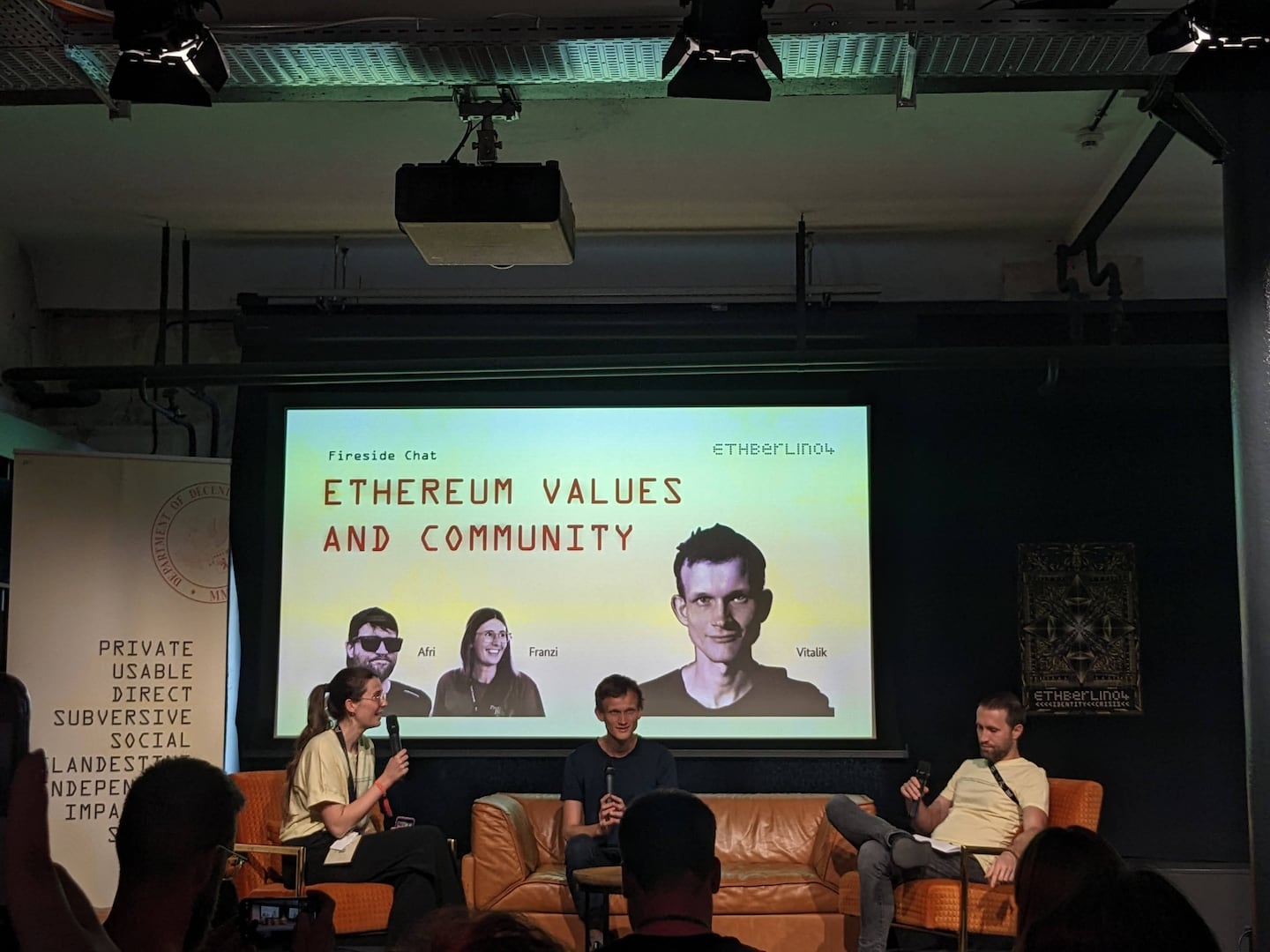
Too many bits, too early
Buterin’s first qualm concerns Ethereum’s Virtual Machine, which is key to making the network function as a kind of decentralised mega crypto computer.
He explained that Ethereum’s original EVM design used 256-bit processing instead of 64- or 32-bit.
In computer architecture, the size of computing is measured in bits, with larger bits offering better efficiencies and processing more data. But 256 bits is very inefficient for most operations, and can create a lot of bloat on a blockchain, even for simple tasks.
For a network in its early days, Ethereum didn’t need to optimise for this.
“The original design was way too overfitted for 256-bit,” Buterin told the audience.
Optimise smart contracts
Second, Buterin said the early Ethereum developers should have focused on making it easier to write smart contracts with fewer lines of code.
The reason? Added transparency.
With fewer lines of code, he said, “people can properly see and check what’s going on inside of them.”

Switch to a ‘crappier’ version of staking
Instead of custom-built computers — called miners — running nonstop to secure a blockchain network, Ethereum switched to a different model.
Ethereum’s switch from a Proof of Work consensus mechanism — the way nodes in a blockchain like Bitcoin’s agree on the state of transaction data — to Proof of Stake in 2022 should have happened much earlier, Buterin said.
“When we switched to Proof of Stake, we should have been willing to switch to a somewhat crappier version of Proof of Stake earlier on,” he said. “We ended up wasting a lot of cycles on really trying to make Proof of Stake perfect.”
Instead of miners, Ethereum is now secured by validators who have staked 32 Ethereum, worth roughly $124,000, to do the same thing — and be rewarded for it. If they misbehave by validating fraudulent transactions, for example, they are penalised.
In sum, the switch swapped out raw, energy-intensive computing power with economic incentives.
“We could have saved a huge amount of trees if we had a much simpler proof-of-stake in 2018,” Buterin said.
Issue logs from day one
From big-money token transfers to backdoor honey pots, users can follow the money quite easily in crypto. That’s thanks in part to automatic logging.
But as the industry advances, notably moving from externally owned accounts like MetaMask to smart wallets like Safe, certain aspects of that crucial logging are lost.
Notably, automatic logs for Ether transfers.
“It should have been in there from the beginning,” Buterin said. “It could have been like 30 minutes of coding from myself, Gav and Jeff. Instead, it’s an EIP.”
Ethereum Improvement Proposals are formal proposals made by developers to change certain aspects of the Ethereum network.
EIP-7708, which Buterin submitted on May 17, would make this precise change.
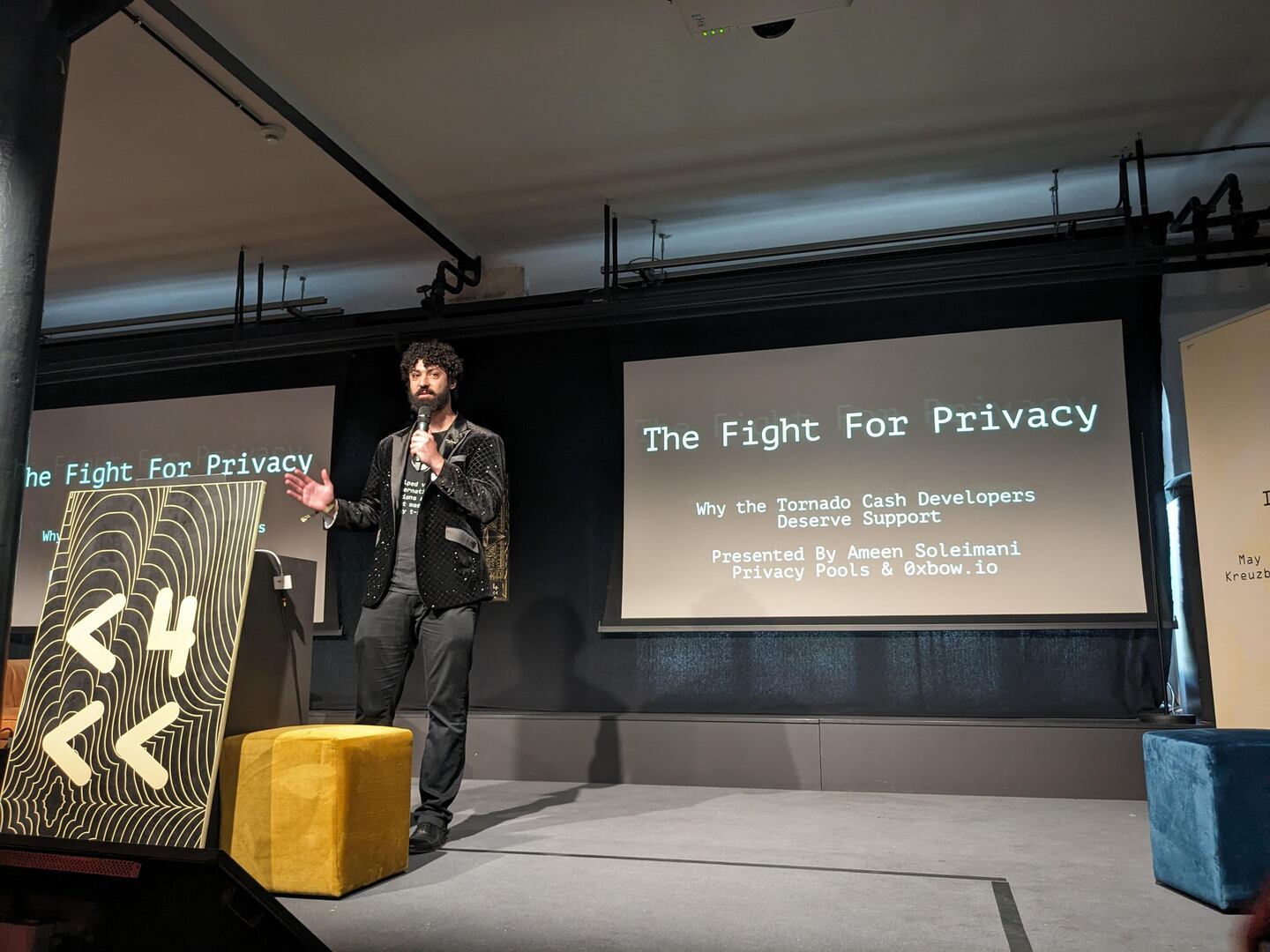
Drop Keccak
Buterin also said he would have used SHA-2 for Ethereum’s hash function rather than the current function called Keccak.
To understand the difference, one must dig into a bit of cryptography lore, specifically about how SHA-3 became a standard. Remember, before crypto became synonymous with celebrity memecoins and nine-figure initial coin offerings, it was about complicated math.
When Ethereum was being built, the hash it used was in a “hash function competition” — yes, that’s a thing.
The National Institute of Standards and Technology organised the competition to create a new hash standard alongside SHA-2.
Previous standards had been attacked and debunked. But SHA-2 was unscathed and the NIST simply wanted a safe alternative. After all, variety is the spice of life (and apparently cryptography).
Keccak was just one of several contestants that entered the competition. During the competition, the team made some minor changes to its algorithms, eventually leading to them being crowned the winner. In other words: SHA-3.
The early Ethereum team had, however, already implemented a non-standardised version of Keccak. Essentially, Ethereum is using a pre-SHA-3 iteration.
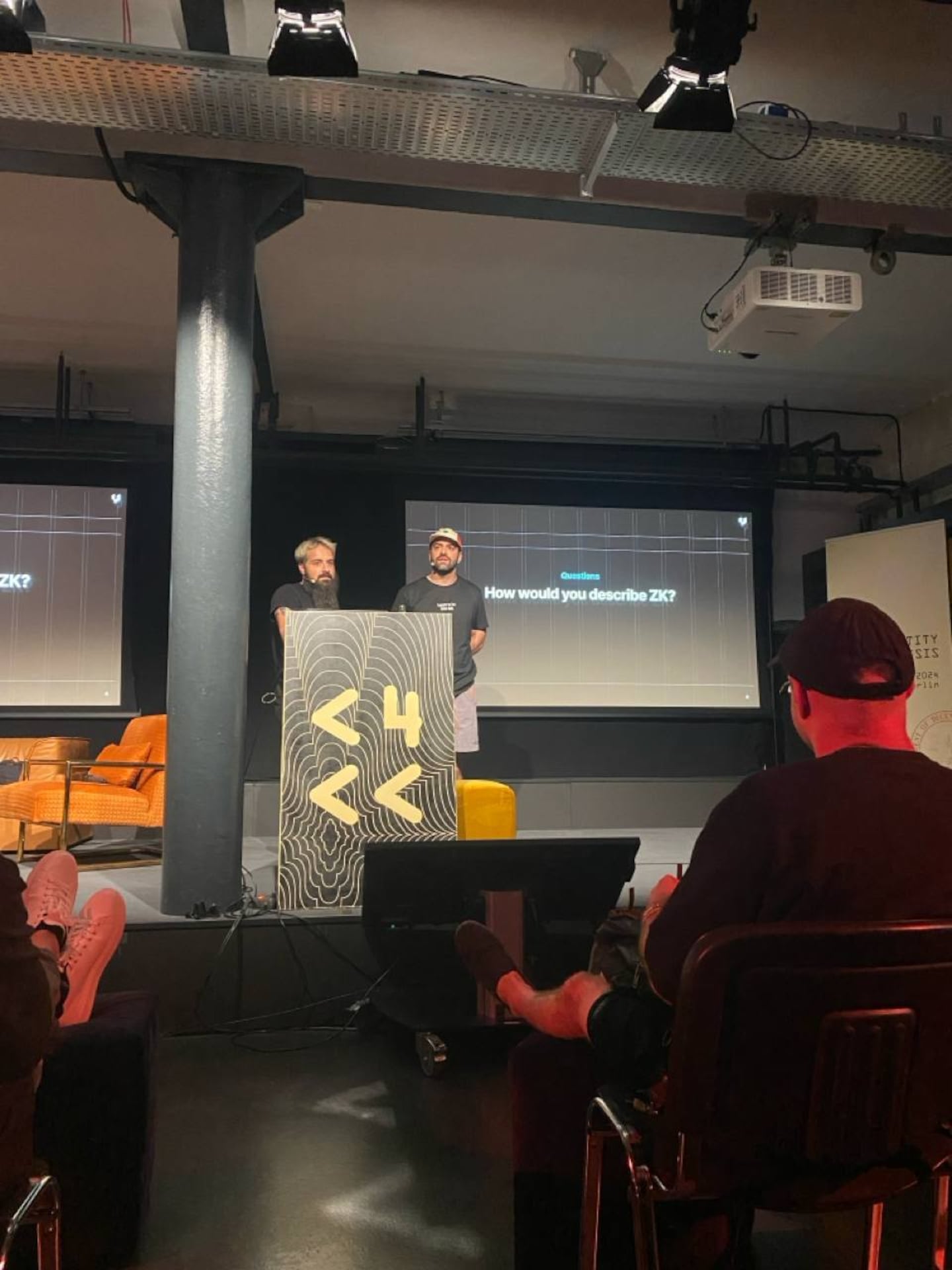
Big whoop, right?
Well, this meant that Ethereum developers needed a custom library — collections of reusable code that needn’t be rewritten from scratch — to accommodate both SHA-3 and Keccak.
“We’re not compatible with other systems using SHA-3,” Marius van der Wijden, a core Ethereum developer, told DL News. “We have to support both algorithms in the EVM.”
It’s essentially been solved. Today, big libraries support both encryption mechanisms.
So, yeah, big whoop indeed.
“It doesn’t matter in the grand scheme of things, and current development is definitely not impacted by it,” said van der Wijden.
Ethereum’s crack team
Despite the list of minor design misses, Buterin said it’s inevitable for any project to have a few.
“I’m just really happy that I feel like our core devs and their execution capacity feels like it just keeps increasing with each passing year,” he said.
“We’re in a position to effectively and safely correct some of these mistakes.”
Liam Kelly is a DeFi Correspondent at DL News. Got a tip? Email at liam@dlnews.com.






